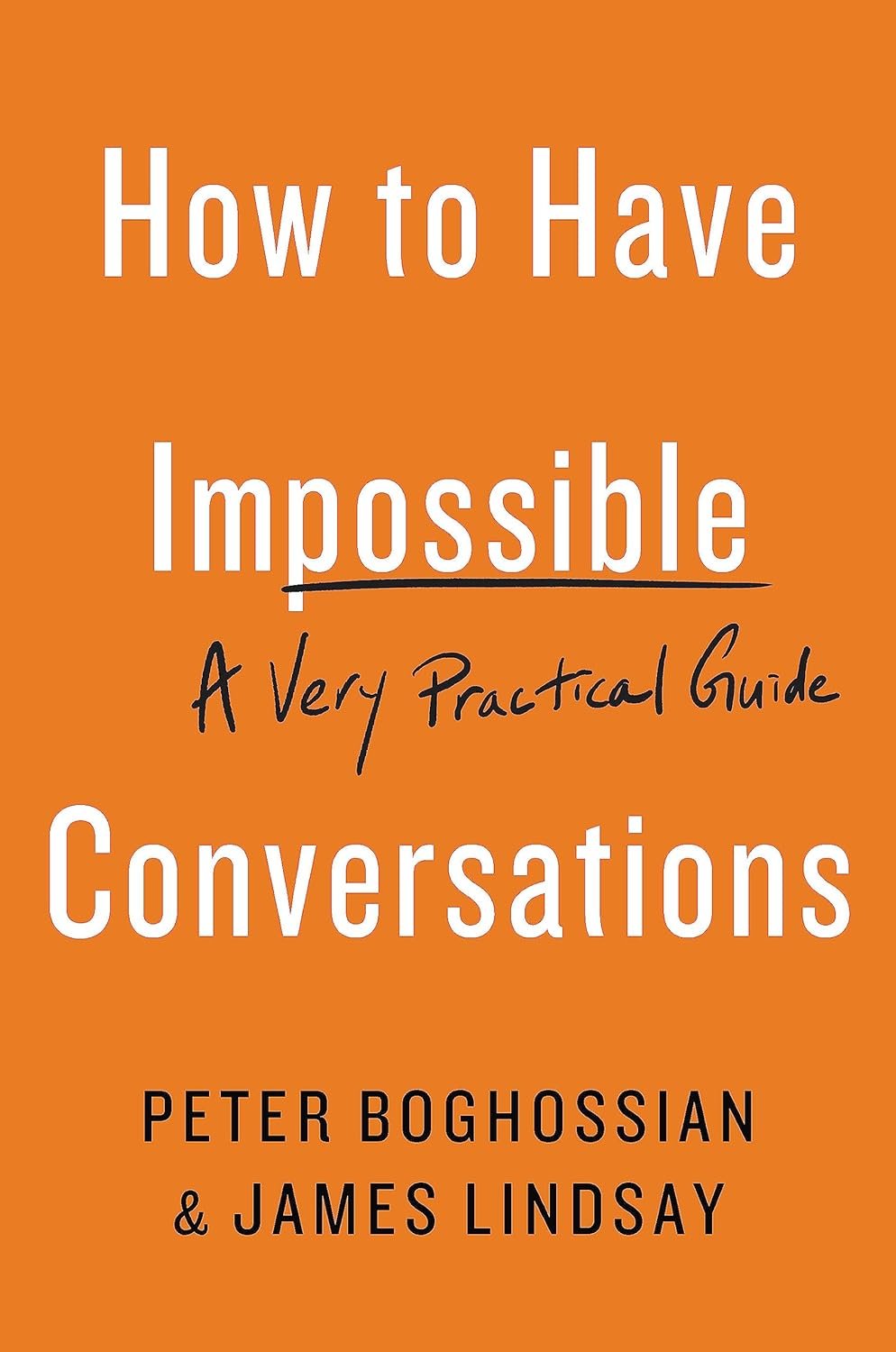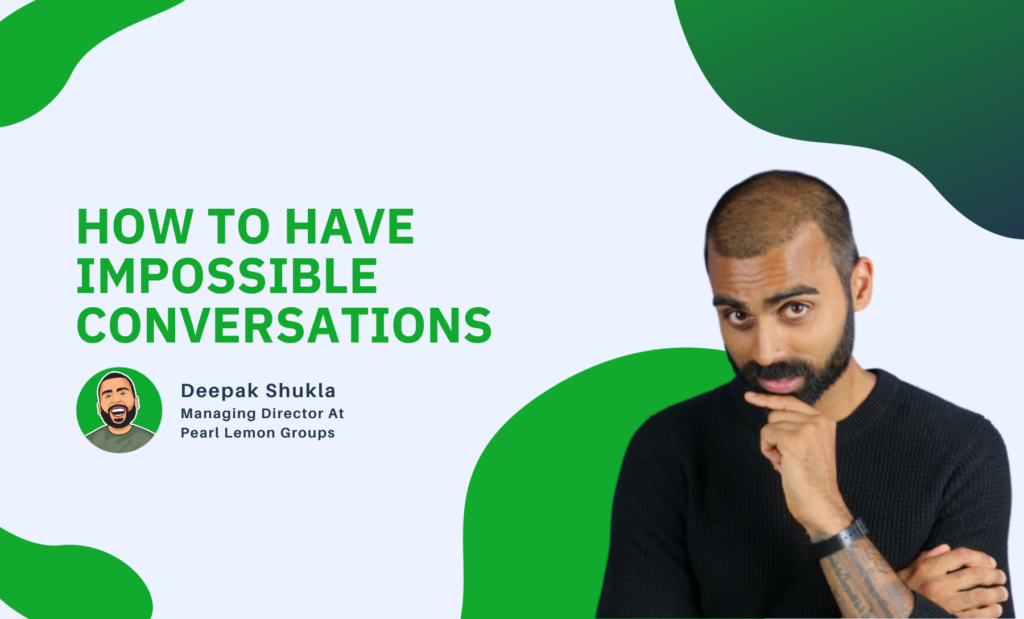Mastering the Art of Dialogue: Insights from “How to Have Impossible Conversations”
Hey there, folks! Welcome back to Deepak’s daily reading.
Today, I want to share some profound insights from the book “How to Have Impossible Conversations” by Peter Boghossian and James Lindsay.
This book has significantly impacted how I approach difficult discussions, and its wisdom is invaluable for entrepreneurs and individuals seeking to navigate tricky conversations effectively.
The Catalyst: An Event That Led to Discovery 🌟
I picked up “How to Have Impossible Conversations” after a particular incident.
I found myself in a situation where my choice of words during a WhatsApp conversation with Axel led to unnecessary conflict.
My message was direct and pointed, and I quickly realised that this approach was not conducive to healthy dialogue when disagreements were involved.
I recall a similar situation with Daniela in the past.
This realisation prompted me to explore ways to handle difficult conversations more effectively.
The book was a revelation, offering practical strategies to engage in challenging discussions with empathy and understanding.

The Power of Perspective: It’s Better to Be Married Than to Be Right 💑
One of the book’s most striking insights is encapsulated in the phrase, “It is better to be married than to be right.”
This profound statement challenges our innate desire to prove ourselves right in arguments.
Often, individuals prioritise winning debates over the quality of relationships.
In entrepreneurship and life in general, this principle holds immense value.
How often have we seen relationships deteriorate because one party insisted on being right, regardless of the consequences?
The book highlights that emphasising being right rarely leads to a productive outcome, as it usually stems from emotional triggers rather than logical discourse.
“Prioritising the quality of your relationships over the need to be right can lead to more meaningful and constructive conversations.” — Deepak Shukla 🌟
The key takeaway here is that to change someone’s mind, you must first change their emotions.
People need to feel heard and valued before they are willing to consider alternative viewpoints.
Quality Over Disagreement: The Value of Lifelong Friendships 🤝
As we navigate the complex web of life, it becomes evident that the quality of our relationships far surpasses the significance of our differences in viewpoints.
This truth becomes even more apparent in the later stages of life, where the richness of friendships and connections takes precedence.
In the entrepreneurial world, where diverse perspectives are the norm, it’s essential to remember that maintaining meaningful relationships often outweighs the need to defend our opinions vehemently.
The ability to disagree and remain friends is a testament to the maturity of a relationship.

Words Matter: The Importance of Language in Dialogue 🗣️
Another crucial aspect of productive conversations is the language we use.
The book encourages us to replace phrases like “your opinion” with “that opinion” when addressing differences.
This subtle shift removes the accusatory tone and fosters a collaborative atmosphere.
Furthermore, it advises us to use “we” instead of “you” when discussing disagreements, emphasising the shared responsibility of finding common ground.
These minor language adjustments can significantly impact a conversation’s tone and outcome.
Conclusion: The Art of Constructive Conversations 🎨
In conclusion, “How to Have Impossible Conversations” provides a treasure trove of insights into the art of dialogue.
It teaches us that the power of perspective and the quality of relationships are paramount.
We can navigate even the most challenging discussions gracefully by prioritising understanding over the need to be right and employing considerate language.
“Mastering the art of constructive conversations can be a game-changer in both business and personal relationships.” — Deepak Shukla 🌟
I wholeheartedly recommend this book to anyone looking to enhance their communication skills and build stronger connections with others.
Remember, it’s not about winning arguments but fostering understanding and collaboration.
Thank you for joining me on this enlightening journey through the pages of “How to Have Impossible Conversations.” 📖🗨️
Key Takeaways From How to Have Impossible Conversations
- Personal Catalysts Can Lead to Growth: Real-life incidents, like Deepak’s problematic conversation with Axel, can be transformative. They can prompt individuals to seek knowledge and tools to improve, leading to significant revelations like the insights from the book.
- Prioritise Relationships Over Being Right: A key insight from the book is the value of relationships over always needing to be right. This principle is especially pertinent in both personal and professional settings. Pushing to prove oneself right, especially from an emotional standpoint, can hinder productive dialogue.
- Emotions Play a Crucial Role in Conversations: To influence someone’s perspective or stance, addressing and understanding their emotions is fundamental. People must feel acknowledged and respected before they are open to alternate viewpoints.
- Lifelong Friendships Over Temporary Differences: The significance of enduring relationships transcends momentary disagreements. A relationship’s true depth and maturity are showcased when individuals can maintain their bond despite differences in opinion.
- Language and Tone Matter: The choice of words and how they are presented plays a pivotal role in constructive dialogue. Simple changes, like shifting from “your opinion” to “that opinion,” can alter the dynamics of a conversation, making it more collaborative.
- Embrace the Art of Constructive Conversations: Engaging in fruitful dialogue involves prioritising understanding, valuing relationships, and employing considerate language. Mastering this art can lead to better outcomes in both personal and business interactions.
- Recommendation and Conclusion: Deepak emphasises the transformative potential of the book for anyone looking to better their communication skills. The primary objective is not about winning debates but promoting understanding and collaboration.

Book Summary Of How To Have Impossible Conversations
“How to Have Impossible Conversations” by Peter Boghossian and James Lindsay offers a comprehensive guide to engaging in productive, bridge-building dialogues, even under the most polarising conditions. Drawing from a rich tapestry of sources, including psychological research, philosophy, and real-world examples, the book underscores the importance of understanding and empathy. It provides readers practical tools to navigate conversations effectively, especially when confronted with deeply held conflicting beliefs. The authors emphasise that successful conversations aren’t about winning arguments but mutual respect, finding common ground, and sometimes agreeing to disagree. Key strategies include approaching conversations humbly, asking open-ended questions, and actively listening. By emphasising the significance of emotional intelligence and avoiding combative tactics, the book illuminates the path to meaningful, transformative conversations. It’s an essential read for anyone living in today’s fragmented society, highlighting the power of conversation in fostering understanding and unity.



